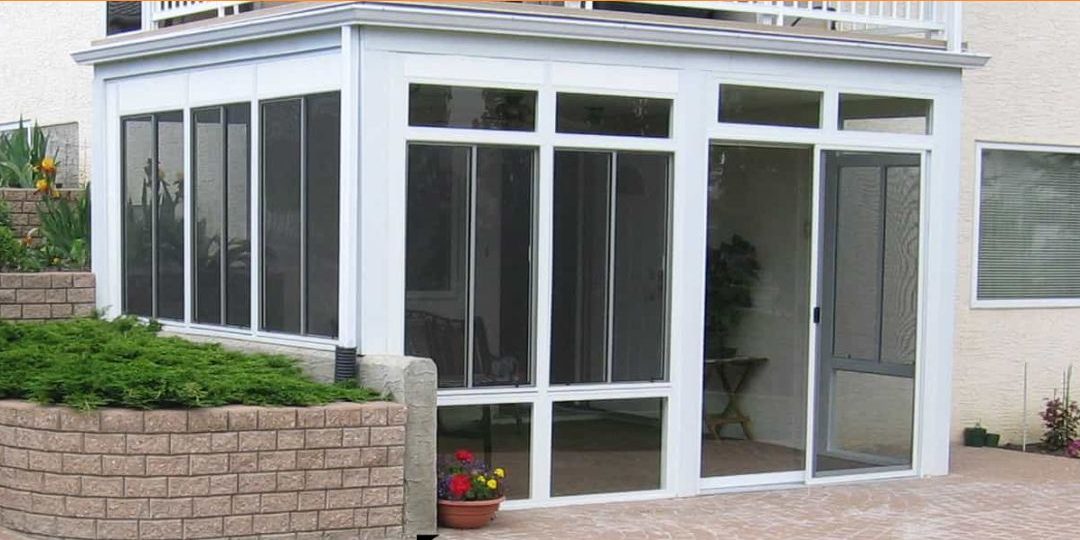After much consideration of space, budget and overall enjoyment of life, you’ve made the wisest property upgrade decision to install a sunroom, and you’ll suddenly be flooded with a raft of decisions. Most of them are expected: the dimensions of the room, the shape and slope of the roof, and how many windows your new room will have. You’ll also have to make decisions about the position of each of the main features, like the doors, the windows, electrical outlets and how you’ll light the room in the evenings.
However, there are some decisions that are less obvious, and the big one that catches a lot of new sunroom owners is the material that you use for your windows. The key decision that you’ll need to make here is whether to have plastic or glass windows, and it’s important to have all the information available to you before you choose.
Why Is Plastic An Option?
The idea of plastic windows may sound strange given that most if not all the other windows in your home are made from glass. However, putting plastic windows in a sunroom has become a more popular idea in recent years as a way of keeping the overall cost of the project down. Plastic windows provide somewhat similar heat retention as their glass counterparts, and are more resistant to cracking in the extremes of Calgary’s temperature range and ice storms. The cheapness of the material also makes them easier and more affordable to replace if something should happen to them.
Why Glass Is Your Best Bet
Despite these advantages, most sunroom contractors will recommend that you stay with traditional glass windows despite the increased cost. Here are some of the most common advantages that glass gives you compare to plastic windows in your sunroom:
- Shape retention – one of the main reasons that glass windows remain the common choice over plastic windows in a sunroom is that glass always keeps its shape. Over the years, plastic windows will start to bend and bow slightly, and this will cause problems with your window frames as well as letting the cold air in during the winter months. Glass windows will always stay flat and smooth so you’d only have to replace them if there was physical damage to one of the sheets of glazing.
- Scratch resistant – speaking of damage, while glass windows are more susceptible to cracking and shattering, the strength of the material means that it would have to be a hard blow to cause serious damage. Plastic windows are more susceptible to scratches that look ugly and affect the way light enters your sunroom, so choosing glass windows is another way of protecting the aesthetic look of your investment.
- UV protection – getting protection from UV rays isn’t necessarily something that you consider when you’re sitting inside your sunroom, but the last thing you want to do is have to move away from the direct light because of UV radiation. Glass windows, especially those with double or triple glazing, provide a natural source of UV protection compared to their plastic counterparts, meaning that you can enjoy the direct sunlight all year long in your new sunroom.
Glass Options
One of the key features of the big glass windows in your sunroom is that they naturally insulate the space. This means that even on the coldest days outside, you’ll still find your sunroom to be at a reasonable temperature because of the trapped radiation from the sun’s rays. The sunlight enters your room and gets reflected off the floor, walls and furniture, but then gets trapped by the glass windows, causing your room to heat up. Despite being something you look through instead of look at, there are a variety of glass windows on offer.
As you’re talking through your window plans with your sunroom contractor, you’ll find that you have a few different glass options depending on your budget and your overall needs:
- Double or triple panes – the easiest glazing option to think about is whether to have a double or a triple layer of glass in each window. Most windows in your home are a single sheet of glass as they aren’t necessarily designed with heat retention in mind. However, in your sunroom, having double glazed windows (where there are two panes of glass separated by a small air pocket) or even triple glazed (where a third sheet of glass is inserted to double the air pockets) creates an additional layer of insulation. This means that not only does the radiation get trapped, but the warmed up air has a harder time escaping too.
- Tempered – if you’re more safety conscious, then having sunroom windows made from tempered glass might be a good option. You won’t be able to tell the difference between regular glass and tempered glass when you look at it, and indeed the only real way that you’ll know the quality of your investment is if your windows ever happen to break. Tempered glass is made by heating the glass to a high temperature and then rapidly cooling it. This has the effect of making each window pane significantly stronger than regular glass, and also causes it to shatter into small fragments which will be easier to clean up and less harmful if anyone gets struck by it.
- Tinted – finally, if you are sensitive to light, or your sunroom positioning means that you’ll get hours of direct sunlight, you may want to opt for tinted windows, which are regular panes of glass mixed with metal oxides. These will look a little darker than normal windows (though not as dark as the tinted windows found on celebrity limousines!) and will keep some of the sun’s glare and radiation out. Not only will this make your sunroom a little cooler during the heat of the day, but it will also serve to protect your soft furnishings and artwork from sun bleaching.







